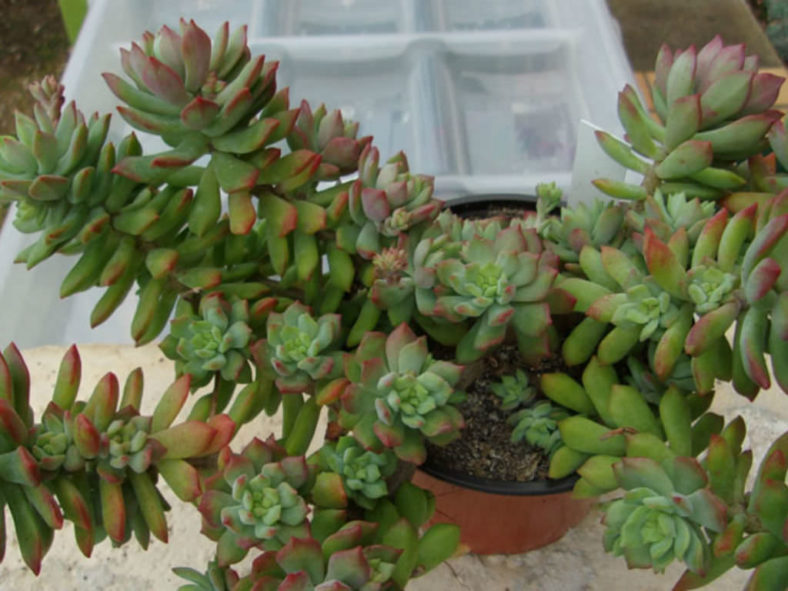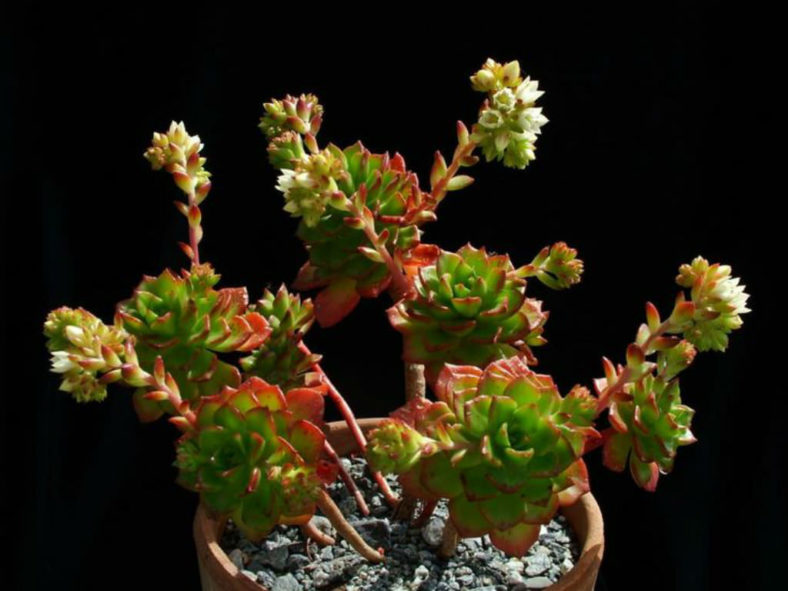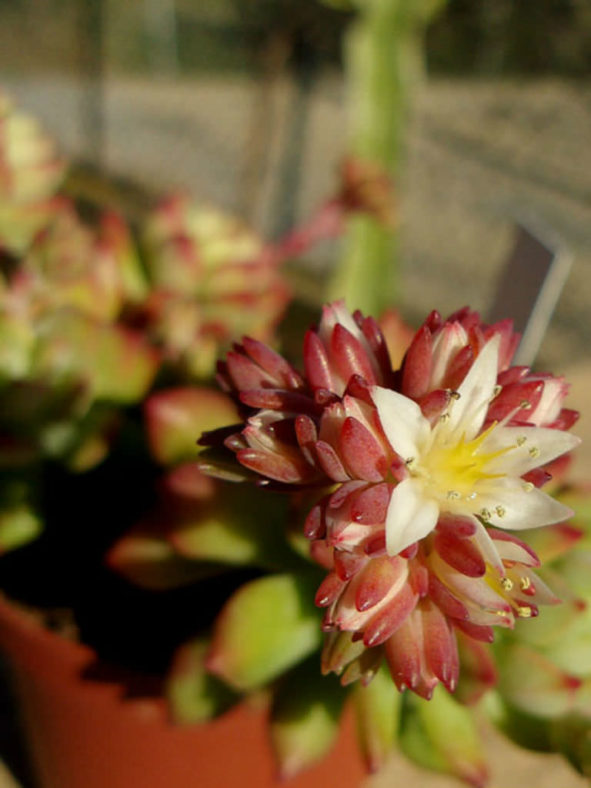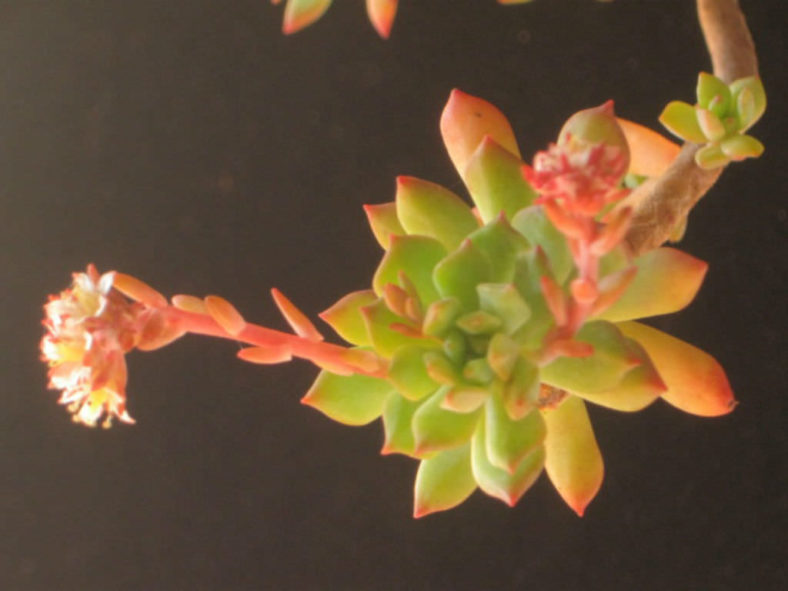Scientific Name
Sedum cuspidatum E.J. Alexander
Scientific Classification
Family: Crassulaceae
Subfamily: Sempervivoideae
Tribe: Sedeae
Genus: Sedum
Etymology
The specific epithet "cuspidatum" (pronounced "kus-pi-DAY-tum") means "tipped, having a cusp, tip or point; cusped, pointed" and refers to the pointed leaves of this species.
Origin
Sedum cuspidatum is native to Mexico (Chiapas).
Description
Sedum cuspidatum is a small succulent shrub with fleshy, branching stems and yellow-green leaves with red edges. The stems are more or less erect when young, becoming decumbent with age, and can grow up to 10 inches (25 cm) long. The leaves are thick, fleshy, and narrowly obovate with a short, sharp point, measuring up to 0.8 inches (2 cm) long and 0.4 inches (1 cm) wide. They are usually present in the upper half of the stems.
The flowers are white, star-shaped, 5-merous, and appear in a terminal cluster on erect, bare stalks in spring.

Hybrids of Sedum cuspidatum
How to Grow and Care for Sedum cuspidatum
Hardiness: USDA hardiness zones 9a to 11b: from 20°F (-6.7°C) to 50°F (10°C).
When growing Sedums, keep in mind that these plants need very little attention. They will thrive in conditions in which many other plants thrive, but do just as well in less hospitable areas. They are ideal for that part of your yard that gets too much sun or too little water to grow anything else. A common name for Sedum is Stonecrop because many gardeners joke that only stones need less care and live longer.
Sedum is easy to propagate. For shorter varieties, laying the plant on the ground where you want it to grow is usually enough to start it there. They will send out roots from wherever the stem touches the ground and the root itself. If you want to ensure the plant starts there, add a very thin layer of soil.
You can break off one of the stems for taller varieties and push it into the ground where you want to grow it. The stem will root very easily, and a new plant will be established in a season or two.
Learn more at How to Grow and Care for Sedum.
Links
- Back to genus Sedum
- Succupedia: Browse succulents by Scientific Name, Common Name, Genus, Family, USDA Hardiness Zone, Origin, or cacti by Genus
Photo Gallery
Click on a photo to see a larger version.


